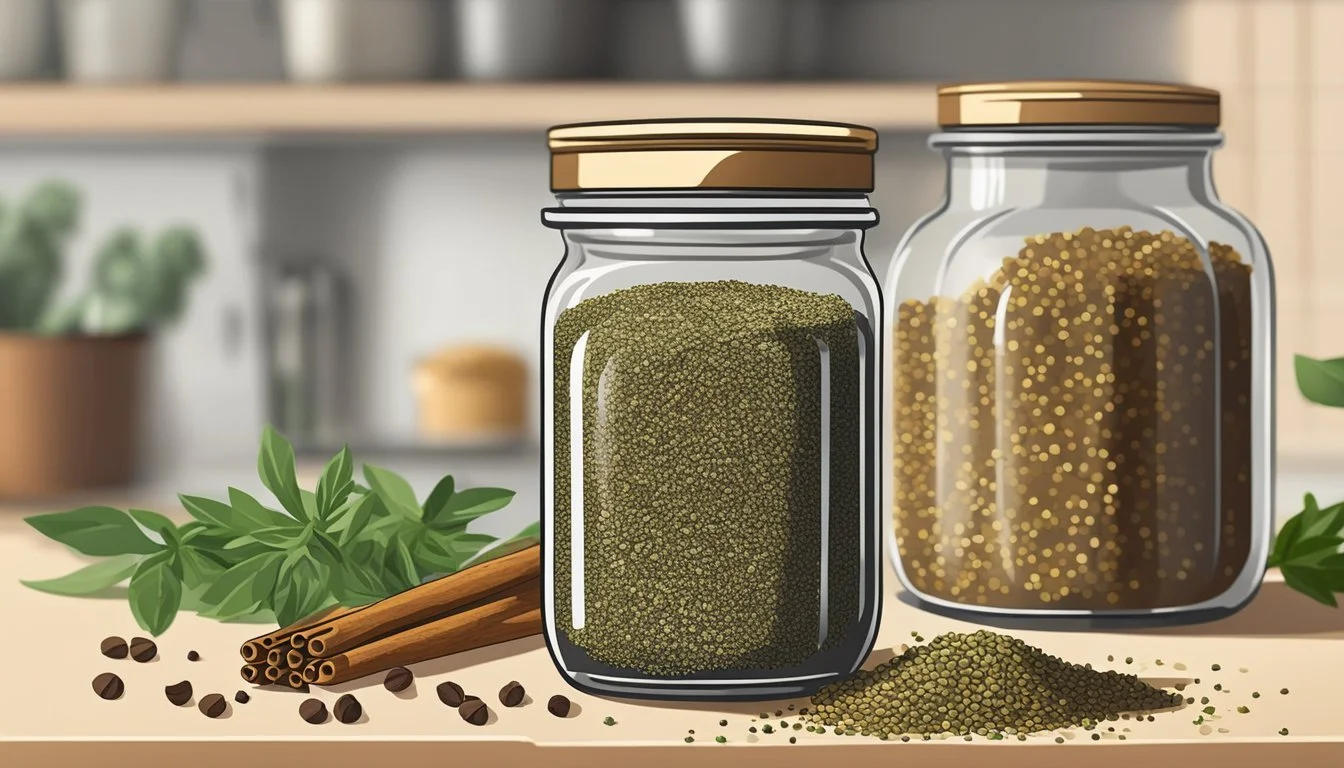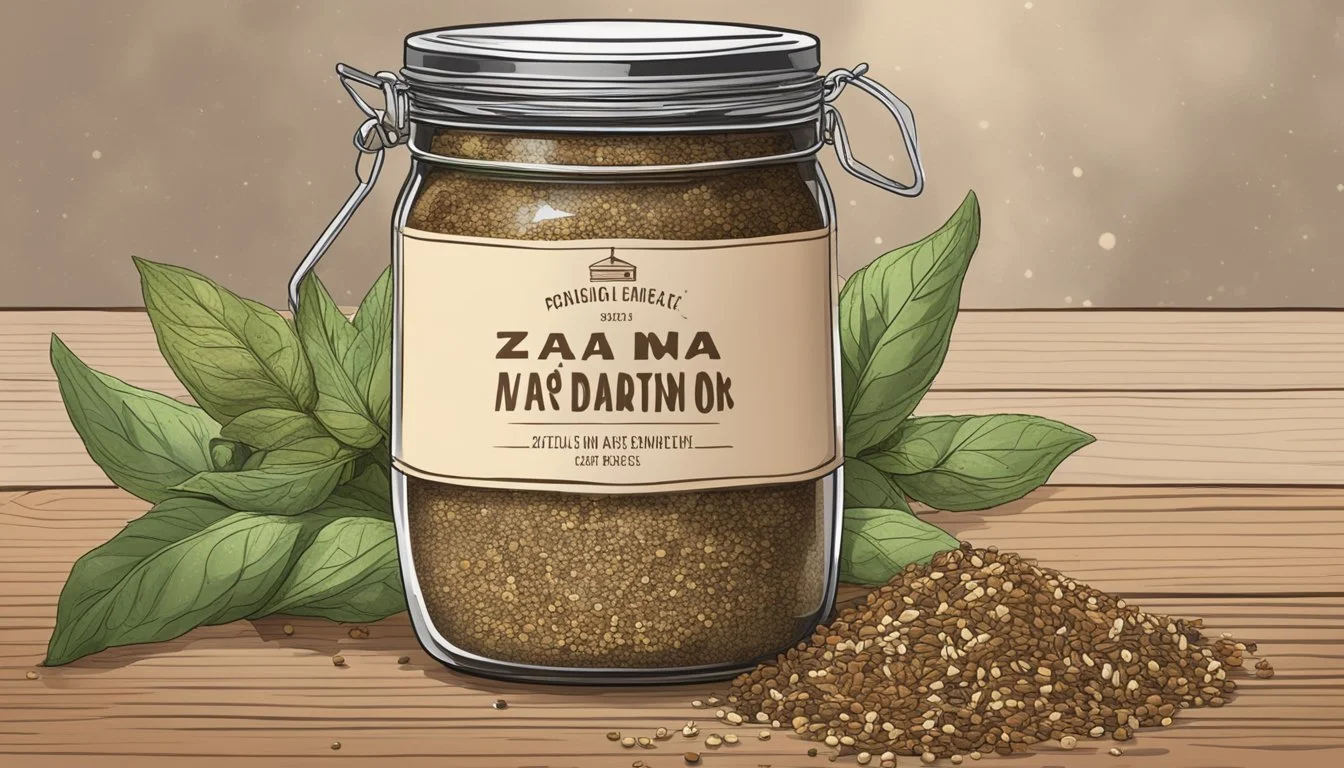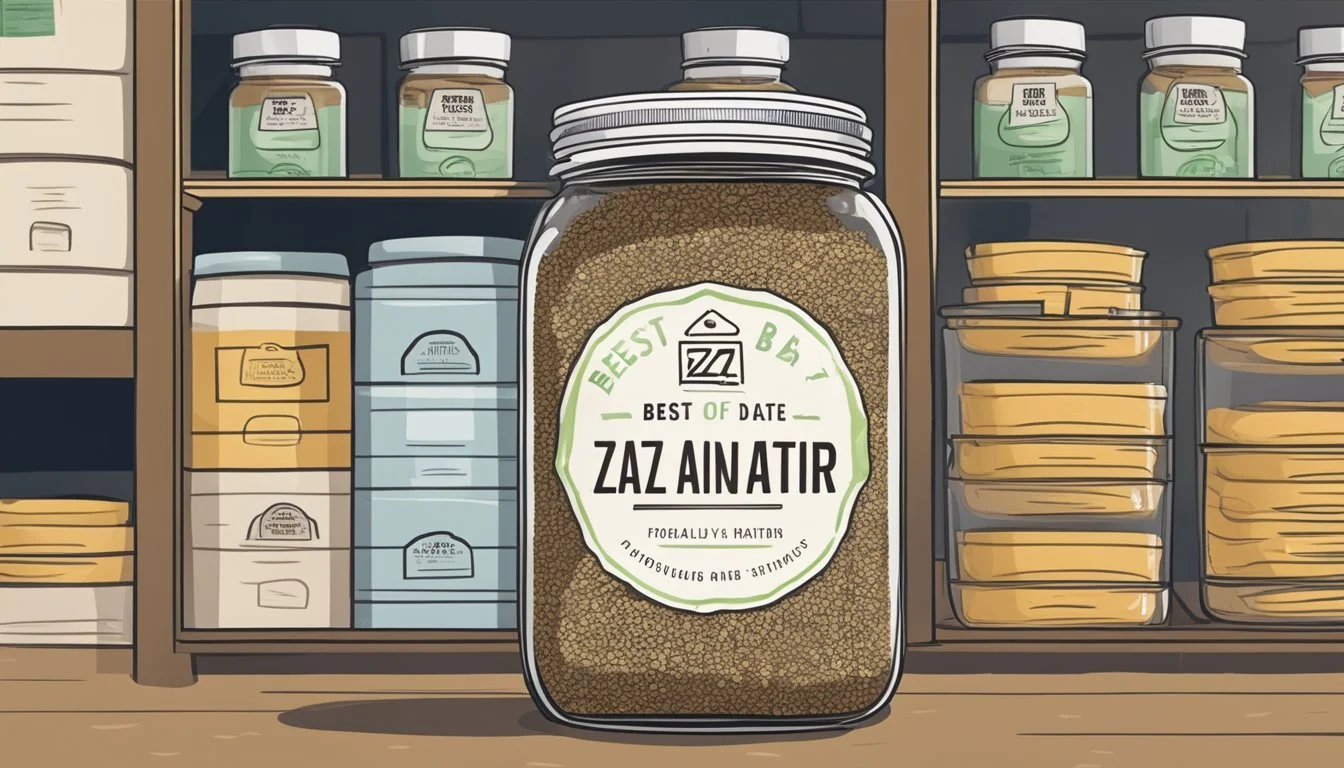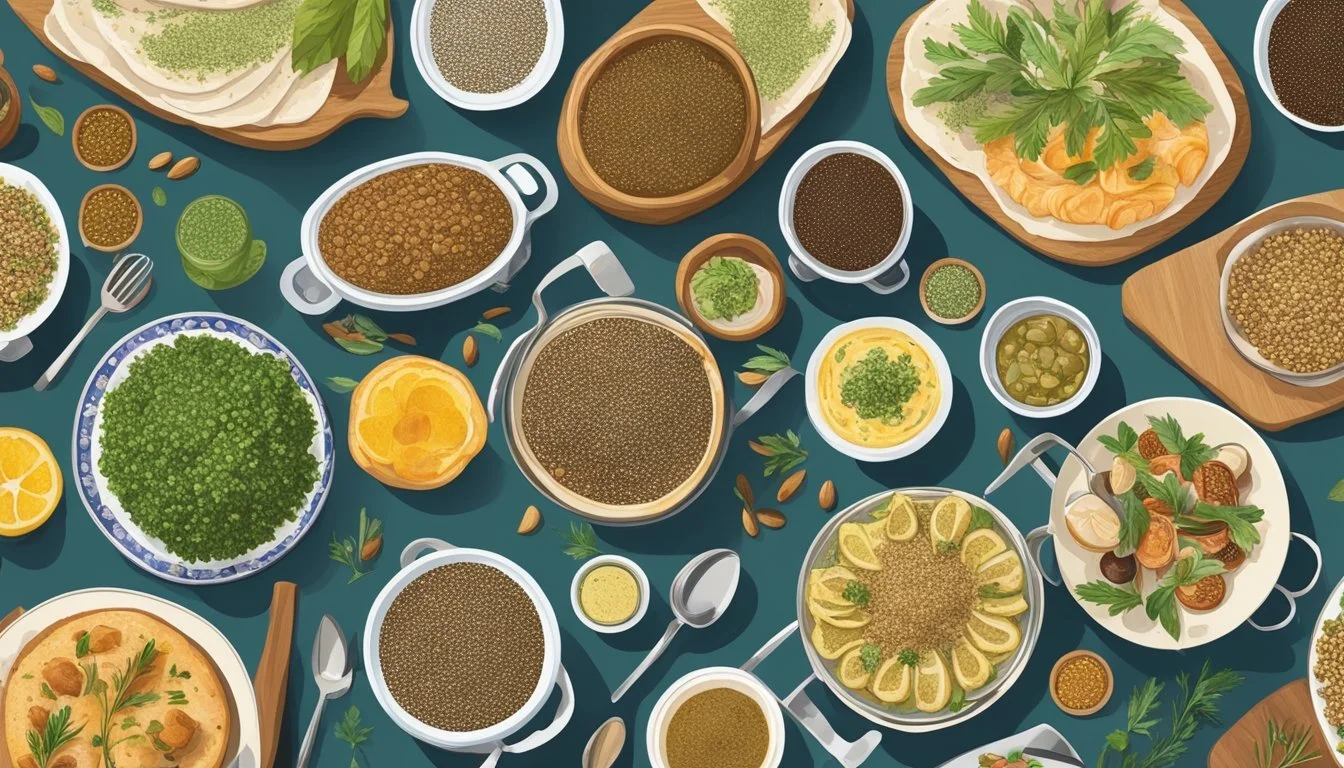Does Za'atar Go Bad? Understanding Its Shelf Life and Storage
Za'atar is a staple in Middle Eastern cuisine, beloved for its unique blend of herbs and spices. Comprising ingredients such as thyme, marjoram, sesame seeds, and sometimes sumac, this spice blend adds a distinctive flavor to various dishes. While za'atar does not spoil like fresh produce, it can lose its potency and aroma over time.
To maintain the vibrant flavors of za'atar, it is crucial to store it correctly. An airtight container kept in a cool, dark place is ideal for preserving its freshness. Some culinary enthusiasts even suggest refrigeration to extend its shelf life further, ensuring that the blend maintains its intended taste and aroma.
Knowing how to store za'atar properly is essential for anyone looking to enjoy this spice blend's full potential. By following these storage guidelines, readers can make sure their za'atar remains flavorful and aromatic, enhancing their culinary creations.
Understanding Za'atar
Za'atar is a traditional spice blend that holds significant historical, culinary, and cultural importance in Middle Eastern and Mediterranean cuisine. It comprises a mix of herbs and spices, offering diverse flavors and textures, with variations depending on the region.
Historical Significance
Za'atar's roots can be traced back to ancient times in the Levant region. It is mentioned in historical texts, including the Bible, highlighting its longstanding presence in the culinary and medicinal practices of the Middle East. Historically, Za'atar was cherished not only for its flavor but also for its health benefits. It has been used for its purported medicinal properties, such as aiding digestion and reducing inflammation. This historical significance adds a rich cultural dimension to its usage, making it more than just a spice blend.
Culinary Uses
Za'atar is versatile and used in various culinary applications. It is often mixed with olive oil and spread on flatbread to create a traditional breakfast dish known as Manakish. Additionally, it can be sprinkled on hummus, labneh, or roasted vegetables, adding a distinct earthy flavor. In cooking, Za'atar is frequently used to season meats, such as grilled chicken, or mixed into marinades. Its ability to enhance both simple dips and complex dishes makes it a staple in Middle Eastern and Mediterranean kitchens.
Composition and Variants
The composition of Za'atar typically includes a blend of dried herbs like oregano, thyme, and marjoram, combined with sesame seeds, sumac, and sometimes salt. Sumac adds a tangy citrus flavor, while sesame seeds provide a nutty taste and crunchy texture. Regional variations exist, with some blends incorporating hyssop, a herb traditionally used in ancient recipes. The exact ratio and type of herbs can vary, resulting in unique flavors specific to different localities. Understanding these variations allows for an appreciation of how Za'atar can be tailored to suit different taste preferences and culinary traditions.
Za'atar's Flavor Profile
Za'atar boasts a diverse and intricate flavor profile, characterized by its surefire balance of nutty, lemony, and earthy tastes. This flavor combination makes it a versatile seasoning for a variety of dishes including meats, vegetables, and salads.
Key Flavor Components
Za'atar is a blend that delivers a complex mix of nutty, lemony, and earthy notes. The primary components usually include thyme, oregano, marjoram, and sumac, all of which contribute to its tangy and savory undertones.
The toasted sesame seeds in za'atar add a subtly nutty aroma and texture. What sets za'atar apart is sumac, providing a lemony zest that balances the earthy herbs. When these elements are properly harvested and combined, they create a harmonious mixture that enhances a wide range of culinary dishes.
Pairing and Enhancing
Za'atar's unique flavor profile makes it an excellent seasoning for a variety of foods. It pairs especially well with grilled meats, bringing an earthy and lemony brightness that complements the char of the grill.
Vegetables and eggs are also enhanced by za'atar. It can be sprinkled over roasted vegetables or mixed with oil to coat tomatoes and salads. In Middle Eastern cuisine, za'atar is often combined with olive oil and spread over bread. This versatile blend also integrates well into marinades for meat, adding depth and richness to the overall flavor.
These unique pairings highlight the versatility of za'atar, making it a staple in kitchens that appreciate bold and balanced flavors.
Health Benefits of Za'atar
Za'atar offers numerous health benefits, ranging from its rich nutritional profile to its anti-inflammatory properties. Its unique combination of herbs and spices provides essential vitamins and minerals, making it a valuable addition to any diet.
Nutritional Content
Za'atar is rich in antioxidants which help protect cells from damage. It contains significant vitamins A, C, and E which are crucial for immune function.
The mixture also has anti-inflammatory and antibacterial properties, making it beneficial for reducing inflammation in the body.
Key Nutrients:
Vitamin A: Supports vision and immune health.
Vitamin C: Essential for skin health and healing.
Vitamin E: Functions as a powerful antioxidant.
This spice mix combines nutrient density with a flavorful profile, offering both health benefits and culinary enjoyment.
Storage Recommendations for Za'atar
Proper storage of za'atar ensures its prolonged freshness, potency, and aroma. To achieve this, airtight containers and the right environmental conditions are crucial.
Optimal Storage Conditions
Za'atar should be kept in a cool, dark place such as a pantry to maintain its quality. Exposure to light, heat, and moisture can degrade the aroma and flavor of this spice blend.
Using an airtight container is essential. This helps to protect the blend from moisture and other environmental factors. Some suggest refrigeration or even freezing to extend the spice's freshness, although this is not strictly necessary if stored properly at room temperature.
Shelf Life and Potency
When stored correctly, za'atar can remain potent for several months. The shelf life of its individual ingredients varies: dried thyme, oregano, and marjoram can last up to 1-3 years, toasted sesame seeds around 1 year, and ground sumac for about 2-3 years.
Immediate potency might decline over time, but proper storage can significantly slow this process. Refrigeration can further extend za'atar's shelf life, helping to maintain its flavor and aroma for a longer period, making it a beneficial storage option for maximizing freshness.
Identifying Degradation
Za'atar, a spice blend made primarily from thyme, sumac, and sesame seeds, eventually degrades over time. Identifying when za'atar has gone bad involves paying attention to several sensory and qualitative factors.
Signs of Spoilage
Aroma: Fresh za'atar has a strong, vibrant smell which diminishes as it degrades. A stale or musty odor indicates it may be past its prime.
Color: The blend should be bright, reflecting its mixed ingredients. Fading or dullness suggests quality loss.
Moisture: Moisture can lead to clumping and mold growth in za'atar. Always store it in an airtight container to prevent this.
Regularly inspecting the spice mix can help retain its best qualities for as long as possible.
Impact on Taste and Use
Flavor Profile: When fresh, za'atar offers an earthy, tangy, and slightly nutty taste. Degraded za'atar loses this complexity, resulting in a flat or insipid flavor.
Seasoning: Fresh za'atar enhances recipes with its robust flavor. Degraded za'atar fails to impart expected taste, affecting the dish's quality.
Using degraded za'atar in cooking is not recommended as it can alter the intended flavor profile and diminish the overall culinary experience. Proper storage is key to maintaining its potent aroma and taste.
Innovative Recipes with Za'atar
Za'atar’s versatility makes it a favorite in both traditional and modern cuisines. From Lebanese classics to unexpected twists, it enhances dishes with its unique blend of dried thyme, toasted sesame seeds, and sumac.
Traditional Dishes
Za'atar Man’oushe: A Middle Eastern breakfast staple, this flatbread is topped with za'atar and olive oil before being baked. Often enjoyed in Lebanon, it pairs perfectly with fresh vegetables and labneh.
Za'atar and Olive Oil Dipping Oil: One of the simplest yet most beloved uses, this combines za'atar with high-quality olive oil. It’s typically served with warm pita bread for dipping, making for a quick and delicious appetizer.
Za'atar Salad Dressing: Mixing za'atar into vinaigrettes adds a burst of flavor to salads. Combine it with olive oil, lemon juice, and a pinch of salt to elevate greens, tomatoes, and cucumbers with a Middle Eastern touch.
Modern Twists
Za'atar on Avocado Toast: Sprinkling za'atar on avocado toast introduces an aromatic complexity. The crunch from toasted sesame seeds and the herbaceous notes of thyme transform a basic dish into a gourmet experience.
Za'atar Focaccia: Incorporating za'atar into focaccia dough brings a fragrant Mediterranean flavor. Scatter za'atar across the top before baking to enhance the bread’s aroma and taste.
Za'atar Roasted Vegetables: Toss seasonal vegetables with olive oil and za'atar before roasting. The spice blend adds depth and earthiness, making it a perfect seasoning for veggies like carrots, potatoes, and bell peppers.
Homemade Za'atar Blends
Creating a homemade za'atar blend ensures freshness and customization. Start with dried thyme and toasted sesame seeds as the base. Add sumac for tanginess and salt for balance.
Basic Blend Recipe: Mix 2 tablespoons dried thyme, 1 tablespoon sumac, 1 tablespoon toasted sesame seeds, and 1 teaspoon salt. Adjust proportions to taste for a personalized spice blend.
Variations: Experiment with additional herbs like oregano or marjoram. Some versions include ground cumin or coriander for extra warmth. Store the blend in an airtight container to maintain its vibrant flavor.
The Global Influence of Za'atar
Za'atar, a cherished Middle Eastern spice mixture, has made its mark globally. It enriches international cuisines through its distinct flavors and encourages cross-cultural culinary fusions.
Za'atar in International Cuisines
Za'atar's unique combination of oregano, thyme, marjoram, and sumac makes it a versatile addition to dishes worldwide. In Mediterranean cuisine, it's often sprinkled on flatbreads and salads.
In the United States, chefs incorporate za'atar in everything from grilled meats to vegetable dishes, appreciating its earthy and tangy profile. European and Asian cuisines also experiment with za'atar, blending it into marinades and roasted vegetables.
Notably, some mix it into cheese and yogurt dips for an extra layer of flavor.
Cultural Exchange and Fusion
Za’atar highlights cultural exchange by being a bridge between Middle Eastern and other global cuisines. As it travels, it often becomes part of fusion dishes that combine Lebanese, Syrian, and Jordanian influences with local ingredients.
For example, dukkah, an Egyptian spice blend, shares similarities and sometimes merges with za’atar to create unique spice mixes. This fusion enriches food culture by introducing diverse culinary techniques and flavors.
Western chefs use za'atar in innovative ways, incorporating it into pastas, salad dressings, and baked goods like bagels. This blend of traditions showcases the dynamic nature of food as it transcends cultural boundaries.








